Red Pill screenshots #7 – Bits and pieces
The summer season is well in effect, and it’s time for some new Red Pill screenshots, showcasing different features & functionality offered by the new air/naval wargame. (Click each for full size)
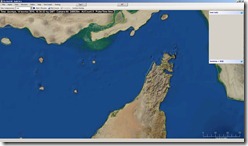
 We have been working lately to incorporate a higher-resolution vector layer for coastlines and borders. This should match the detailed data already offered by our raster layers and allow us significant near-coast refinement for littoral operations such as amphibious landings, mine warfare, piracy & policing operations etc. This is a side-by-side comparison of our current vector set and the proposed new one, using the Hormuz straits as reference.
We have been working lately to incorporate a higher-resolution vector layer for coastlines and borders. This should match the detailed data already offered by our raster layers and allow us significant near-coast refinement for littoral operations such as amphibious landings, mine warfare, piracy & policing operations etc. This is a side-by-side comparison of our current vector set and the proposed new one, using the Hormuz straits as reference.
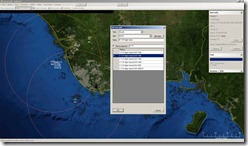 Adding units to a scenario in legacy air/nav wargames can often be a tedious process because of the time needed to find a specific unit class and the limited copy/move functionality. The “Add Unit” dialog in Red Pill offers a keyword-based filter that allows easy, fast location of the desired unit class. Copying or moving an existing unit is also a single keystroke away.
Adding units to a scenario in legacy air/nav wargames can often be a tedious process because of the time needed to find a specific unit class and the limited copy/move functionality. The “Add Unit” dialog in Red Pill offers a keyword-based filter that allows easy, fast location of the desired unit class. Copying or moving an existing unit is also a single keystroke away.
 This is another huge time-saver for scenario authors. You can import and present geo-referenced images (e.g. from Google Earth as in this case) directly into the game map and use them both for unit construction and normal gameplay alike. In this case we have imported an overhead image of the Natanz nuclear complex and we are using it to construct a highly-authentic representation of the facilities in the area (notice the “Nuclear Power Station” structure already placed). The same method can be used for constructing airbases, port complexes, SAM sites – any multi-unit installation that requires high precision on the placement of its components in order to model faithfully. Once in place, any such installation can be exported to a file and re-used in any other scenario.
This is another huge time-saver for scenario authors. You can import and present geo-referenced images (e.g. from Google Earth as in this case) directly into the game map and use them both for unit construction and normal gameplay alike. In this case we have imported an overhead image of the Natanz nuclear complex and we are using it to construct a highly-authentic representation of the facilities in the area (notice the “Nuclear Power Station” structure already placed). The same method can be used for constructing airbases, port complexes, SAM sites – any multi-unit installation that requires high precision on the placement of its components in order to model faithfully. Once in place, any such installation can be exported to a file and re-used in any other scenario.
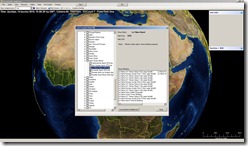 This is an example of installation import. Each record can include supplementary information such as creator comments or time-range of validity so that the scenario author can decide whether to use it or not. The installation components are also listed in detail.
This is an example of installation import. Each record can include supplementary information such as creator comments or time-range of validity so that the scenario author can decide whether to use it or not. The installation components are also listed in detail.
In this case we have selected 2 airports for import. An installation creator can choose to either store one installation per record (e.g. an airbase) or alternatively include all instances of an installation type in a single record (e.g a country’s entire air-defence network). This allows great flexibility in creating, storing and sharing installations for use in scenarios.
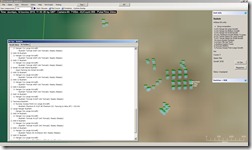 Bushehr airbase in detail. Group-view is selected for the map display, hence the airbase objects appear “ghosted”. The unit-status window has a “Group composition” option that presents a summary of the unit types comprising the base (this is also handy for quickly checking e.g. the ship types & numbers in a CVBG or convoy).
Bushehr airbase in detail. Group-view is selected for the map display, hence the airbase objects appear “ghosted”. The unit-status window has a “Group composition” option that presents a summary of the unit types comprising the base (this is also handy for quickly checking e.g. the ship types & numbers in a CVBG or convoy).
The “Air Facilities” portion of the Air Ops window presents the state of air operations in the base in a facility-centric manner. We can examine in detail which aircraft is placed where and what is present status is. We see that an F-4E is using a runway access point (typically a taxiway) to proceed towards one of the runways and take off. Access points such as taxiways (and elevators in aviation ships) are by far the weakest link, and their damage/destruction is the most cost-effective way of disrupting, or even grinding to a halt, ongoing air operations. We will probably need to devote a future article exclusively to this aspect of air ops.
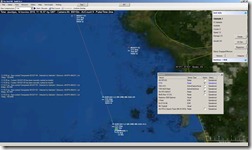 An Australian Adelaide-class (modernized Perry) frigate is facing off two hostile aircraft with her SM-2 missiles. The sensors window is open, displaying the frigate’s sensor status. The dotted red line is the SARH illumination for the SM-2 missiles provided by the frigate’s STIR radar. Notice that only the STIR and the SPS-49 search radar are currently active.
An Australian Adelaide-class (modernized Perry) frigate is facing off two hostile aircraft with her SM-2 missiles. The sensors window is open, displaying the frigate’s sensor status. The dotted red line is the SARH illumination for the SM-2 missiles provided by the frigate’s STIR radar. Notice that only the STIR and the SPS-49 search radar are currently active.
A frequent answer to the common question “Why is my [ship/aircraft/SAM site/etc] not shooting at [some target]?” is that all engagement/illumination channels are currently in use. In legacy air/nav games this is difficult to demonstrate and visualize. Red Pill makes this easier by clearly displaying which sensors are active and which targets are being illuminated for engagement. In this case, the only available SARH illuminator (the STIR radar) is being used to engage the first aircraft, so the second one cannot yet be engaged.
 A player favorite: buddy-lasing. The AV-8B Harrier on the bottom of the map has launched two AGM-65E laser-guided Maverick missiles and sharply turned southbound to avoid the target’s terminal defences. A nearby orbiting F-117A takes up the responsibility of providing laser illumination (notice the red line) for the terminal homing phase of the missiles. This is done without any manual user intervention. Scratch one C3 bunker!
A player favorite: buddy-lasing. The AV-8B Harrier on the bottom of the map has launched two AGM-65E laser-guided Maverick missiles and sharply turned southbound to avoid the target’s terminal defences. A nearby orbiting F-117A takes up the responsibility of providing laser illumination (notice the red line) for the terminal homing phase of the missiles. This is done without any manual user intervention. Scratch one C3 bunker!
More to follow soon…
Comments
Leave a Reply
You must be logged in to post a comment.





